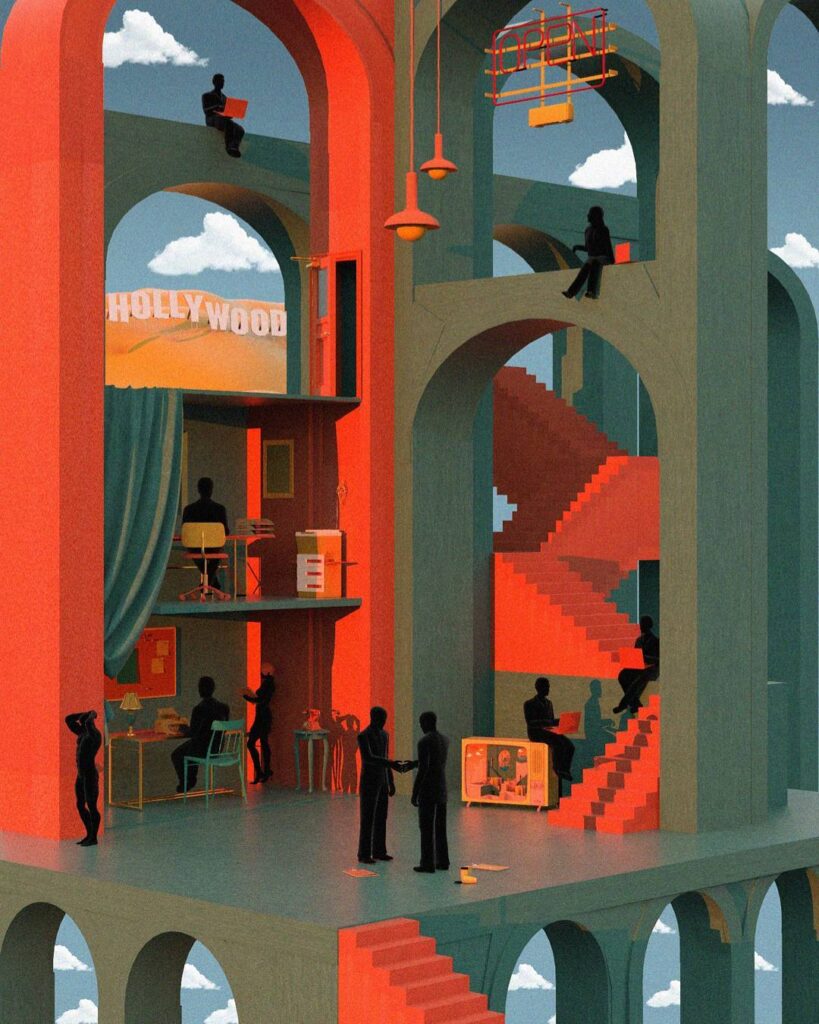
Introduction
Modern creativity is looking in the rearview mirror—and liking what it sees. Across galleries, design studios, digital platforms, and fashion houses, retro art styles are not only resurfacing but redefining what contemporary creativity looks like in 2025. From 8-bit aesthetics and airbrush gradients to 1980s surrealism and 1990s rave culture, artists are fusing the past with the present in ways that feel fresh, ironic, and emotionally resonant. This is more than a trend—it’s a new language of cultural expression where yesterday’s styles fuel tomorrow’s innovation.
What Defines the Retro Art Influence in 2025?
The retro influence of today spans far more than nostalgia—it’s a layered approach to style, symbolism, and storytelling. Key characteristics include:
Color Palettes – Electric blues, sun-faded pastels, earth tones from the 70s, or neon brights from the 80s and 90s.
Typography and Design – Serif fonts from mid-century ads, pixel fonts from video games, or graffiti-inspired layouts.
Media Techniques – Airbrush painting, silkscreen printing, risograph duplicating, and grainy film textures.
Cultural Cues – Cassette tapes, vintage electronics, arcade motifs, Y2K aesthetics, and classic animation tropes.
This isn’t about replication—it’s reinvention. The old is being sampled, chopped, looped, and remixed into something entirely new.
Why Artists Are Turning to the Past for Creative Inspiration
Several cultural and psychological forces are driving this retro-forward momentum:
Rejection of Digital Perfection – In a world saturated with high-definition, AI-generated visuals, retro offers imperfection, texture, and humanity.
Emotional Comfort – Artists and audiences alike are using familiar imagery to process uncertainty, anxiety, and identity.
Cultural Commentary – By placing today’s issues in retro settings, artists can make powerful statements about consumerism, race, gender, and surveillance.
Interdisciplinary Fusion – Retro works are blending with streetwear, web design, music videos, and NFTs, creating a cross-industry aesthetic wave.
Looking back is helping artists move forward with clarity, irony, and courage.
Artists Leading the Creative Retro Renaissance
Contemporary artists are integrating retro themes not as gimmick, but as deep creative tools. Leading voices include:
Tishk Barzanji – Known for his pastel-colored interiors that recall 1980s Memphis design with a sci-fi twist.
Jenna Gribbon – Merges figurative painting with retro domestic spaces, creating voyeuristic, time-bending portraits.
James Ulmer – Uses childlike, flattened figures inspired by cartoons, folk art, and 60s pop design.
Yinka Ilori – Infuses West African patterns with 80s London streetwear and furniture design to reclaim joyful aesthetics.
These creators aren’t playing dress-up—they’re building bridges between memory and meaning.
Retro Influence Across Creative Industries
The retro trend isn’t confined to galleries—it’s exploding across creative fields:
Graphic Design – Retro posters, album covers, and branding dominate both indie and luxury markets.
Fashion – Brands like Balmain and Marc Jacobs have launched entire collections based on 90s cybercore and 70s glam.
Interior Design – Curved furniture, terrazzo flooring, and color-block walls are back in vogue.
Music Videos – Artists like Dua Lipa and The Weeknd use VHS effects and arcade settings in their visuals.
The effect is immersive—retro isn’t just being viewed, it’s being lived.
Notable Works and Sales Reflecting Retro Success
The market is rewarding retro-forward art. Key moments include:
Tishk Barzanji’s surrealist prints regularly selling for $10,000–$30,000 and climbing.
Yinka Ilori’s furniture collaborations fetching high demand across Europe and the U.S.
Vintage NFT Collections using pixel art and early internet graphics continuing to hold strong value despite market volatility.
Collectors are showing that well-executed retro art isn’t just on trend—it’s a smart investment.
Cultural Meaning Behind the Retro Revival
Retro art is more than just aesthetic play—it carries deep cultural implications:
Queer and Feminist Reclamation – Many artists revisit sexist or heteronormative media tropes from the past to reframe and reclaim them.
Racial Reimagining – Black, Asian, and Latinx artists are placing themselves in the retro future worlds from which they were once excluded.
Techno-Spiritual Exploration – Some retro works blur spirituality, nostalgia, and futurism to imagine better worlds.
In short, retro becomes a vehicle for resistance, healing, and joy.
The Future of Retro-Inspired Creativity
What comes next for this nostalgic wave?
Analog-Digital Hybrids – More artists are combining old-school techniques like printmaking and embroidery with AR/VR extensions.
AfroRetro Futurism – Expect more creators blending vintage style with Black futurist storytelling.
Global Syntheses – Retro aesthetics from Latin America, Japan, and South Asia will continue to shape the trend’s evolution.
The retro wave isn’t slowing—it’s expanding globally and ideologically.
Conclusion
Retro art styles are proving to be one of the most versatile and dynamic tools for contemporary creativity in 2025. By reimagining the past, today’s artists are building bold, emotionally charged works that speak to the future. From visual storytelling to market appeal, the Retro Revival is more than just a look—it’s a movement with staying power.
The art piece used in this post is called “Landscape 9” by Tishk-Barzanji
For Inquiries and Exclusive Promotions:
Explore our curated offerings at Artists Breath.
Discover Our Exquisite Collection:
Immerse yourself in our distinguished selection of fine art at Artists Breath Collection.
Connect with Our Artists and Gallery:
For personalized assistance or to engage with our talented artists, please reach out at info@artistsbreath.com.
Stay Informed with Our Insights:
Subscribe to our Substack for the latest in art and culture at Artists Breath Substack.